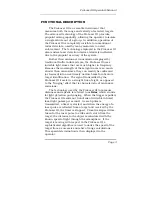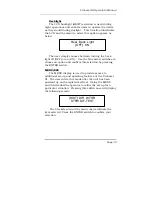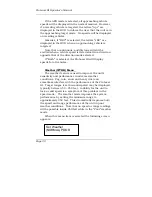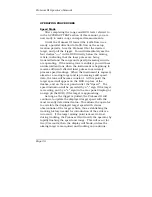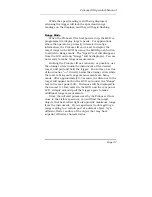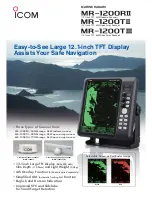
ProLaser III Operator's Manual
Page 12
Visibility conditions also affect the performance of the
ProLaser III. Although the laser emissions used by the
device are not in the visible spectrum, they are close
enough in wavelength that atmospheric or climatic
conditions that impair vision also adversely affect the
operation. This impact is mitigated to some degree due to
the new “poor” weather operating feature available on
ProLaser III. However, rain, smoke, fog, and airborne dust
particles, if sufficiently dense, may prevent its operation.
The instrument is not affected by ambient light
conditions, however, and equivalent performance should
be obtained whether operating in bright daylight or in
total darkness.
To obtain maximum operating range at the setup
location, the instrument should ideally be positioned so
that it is not operating through any glass in the patrol
vehicle. The oblique angles of most windshields will often
reduce the effective range of the system, and in addition,
some windshields are treated with a coating that blocks
the infrared emissions, making operation impossible.
Operation through the side glass is preferable to operation
through the windshield, although this may also result in
some loss of range performance.
Due to the extremely narrow beamwidth of the
ProLaser III that makes precise target identification
possible, it may be difficult to aim at long ranges if
operated handheld. For those situations, use of a
monopod or tripod to assist in stabilizing the instrument
may be helpful.



